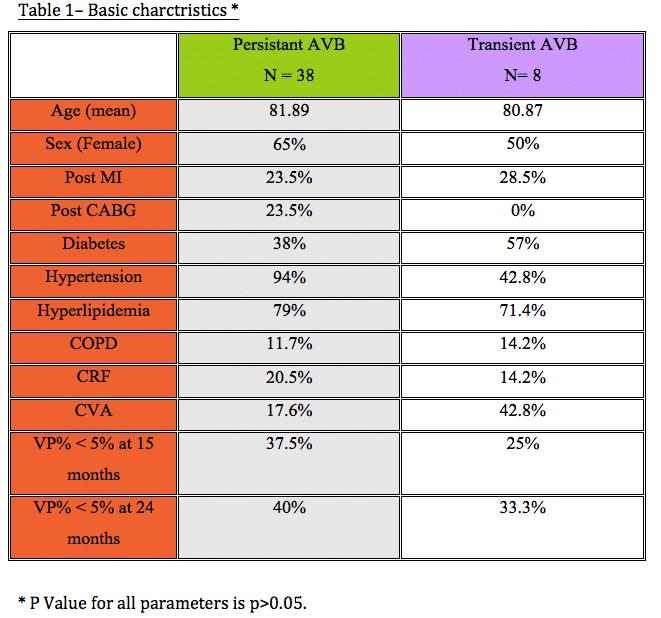Introduction: Percutaneous aortic valve replacement (TAVR) is an emerging therapy for patients with severe aortic stenosis. It is, however, associated with various complications, one of the most common complication is heart block. Permanent pacemaker (PPM) implantation rates are reported in up to 25% and 6% of implanted patients with Medtronic Corevalve system and Edwards Sapien XT system, respectively. We sought to evaluate the long-term dependency in post-TAVR PPM recipients.
Methods: The study included 440 consecutive patients who underwent TAVR between 2008 and 2013, in our institute. Forty-six patients (10.5%) underwent pacemaker implantation within 24 hours due to evidence of persistent AVB (83%) and transient AVB (17%) PPM interrogation and determination of underlying rhythm was performed 24 hours and 3,9,15 and 24 months following PPM implantation.
Results: Already at 24 hours after PPM implantation, 15 patients (39%) who were implanted for persistent AVB and 6 patients (75%) who had transient AVB showed no evidence of AV block. In fact, these patients had no AV conduction disorder throughout 15 months. Furthermore, at 24 months, more than half of the patients (53%) who had had persistent AVB after TAVR did not have evidence of significant AV conduction disorder.
In addition, more than one third of patients with history of persistent AVB post TAVR had <5% ventricular pacing, despite conservative programming with short AV delay (150 ms). We were unable to find predictors for non-dependency (Table 1).
Conclusion: A substantial portion of PPM recipients following TAVR shows no evidence of significant AV conduction disorder or pacemaker dependency after 2-year follow-up. Further studies are needed in order to better characterize these patients.


